A specter is stalking Europe. Well, not just Europe really, it’s pestering the whole bloody world. It often goes unnamed, though we can all point to its effects, and has been credited with everything from the 2008 financial crash and decline of public health and education, to the epidemic of loneliness.
This specter does have a name though; shall I name it?
It is none other than “neoliberalism”, and I guarantee that this poisonous ideology is currently fucking up a spiritual practice near you.
Defining Neoliberalism: The Roots
Neoliberalism is one of those terms that is difficult to define, and despite its early proponents happily referring to themselves as neoliberals, is a term seldom heard nowadays, even as the ideology has rooted and solidified.
Curious, no?
It started, as with many things, with a group of people thinking they’d found a better way. Collectivism is a force that can either be exceedingly positive or  exceedingly terrifying; and the earliest proponents – two Austrian exiles attending a meeting in late 1930s Paris had certainly seen plenty of the exceedingly terrifying. So it’s not hard to understand their aversion to anything that smacked of collectivism. I do not mean to paint these men with too much sympathy though, and the reasons for this will become clearer as I go on.
exceedingly terrifying; and the earliest proponents – two Austrian exiles attending a meeting in late 1930s Paris had certainly seen plenty of the exceedingly terrifying. So it’s not hard to understand their aversion to anything that smacked of collectivism. I do not mean to paint these men with too much sympathy though, and the reasons for this will become clearer as I go on.
What began as a term coined during a meeting of minds in the City of Lights would coalesce into theory in 1944 when Hayek published his book The Road to Serfdom in which he argued that government planning not only crushed individualism, but would eventually lead to totalitarianism. This unsurprisingly caught the attention of some extremely wealthy individuals who saw in this ideology the potential for both limitless profit and an escape from taxation.
So it’s no surprise that when Hayek founded the Mont Pelerin Society in 1947 – the world’s first organization dedicated to spreading neoliberal ideology – he did so with the backing of multiple millionaires.
Defining Neoliberalism: The Ascent
Hayek went on to create a transatlantic network of supporters, and his rich backers put their money towards a series of organizations with names that some of you might recognize such as the Cato Institute, the Heritage Foundation, the Institute For Economic Affairs, the Center for Policy Studies, and the Adam Smith institute.
As time went on, the movement changed and gained new thought leaders such as Milton Friedman. It was also around this time that the term “neoliberal” curiously all but disappeared as a self-identifier – or indeed from public discourse.
But no one was paying attention to that back then – Keynesian economics that emphasized the social contract were in vogue, and so the neoliberal leviathan slept.
The 70s brought with them economic crisis and the old Keynesian policies were struggling to keep up. This was when neoliberalism popped up again with all the enthusiasm of Internet Explorer when you accidentally hit the wrong icon at the bottom of the screen. Except with you know…a weird illuminati vibe.
“When the time came that you had to change … there was an alternative ready there to be picked up”
-Milton Friedman
Defining Neoliberalism: Dominance
1979 and 1980 were big years for neoliberalism – or rather the ideology that was now curiously unnamed. Key proponents of the ideology swept to power in both the US and the UK and set about following Hayek’s prescription to the  letter. Deregulation was pushed so as not to impact the efficiency of industry. Public health and education were privatized and dismantled as much as possible. Special efforts were taken to break the collectivism of the trade unions (and the threat they posed to the neoliberal agenda). And all the while, the rich got to divide up and profit off everything that was outsourced and privatized – all with increasingly egregious tax breaks of course.
letter. Deregulation was pushed so as not to impact the efficiency of industry. Public health and education were privatized and dismantled as much as possible. Special efforts were taken to break the collectivism of the trade unions (and the threat they posed to the neoliberal agenda). And all the while, the rich got to divide up and profit off everything that was outsourced and privatized – all with increasingly egregious tax breaks of course.
And that is the world we now find ourselves in, kids! That
is neoliberalism.
A world in which money buys freedom and political voice while the vote and wages of the average citizen decrease in value. In which the earth itself is sacrificed for profit, and people are kept docile by endless consumerism and entertainment. (Or as the Romans liked to call it, bread and circuses.)
But hey, “you can have it your way”, “you’re free”, this isn’t really the road to serfdom.
Neoliberalism and Spirituality
“Consumerism is the opium of the masses…along with well, illegally acquired prescription narcotics.”
– Me
But what in the Sam Harris does any of this have to do with your spirituality, and how is probably fucking it all up for you? Well, I’m glad you didn’t ask, because I’m going to tell you anyway.
In my last post, I wrote about consensus and how it affects perception. Well neoliberalism is a huge part of the consensus reality we live in, and it guards its  position fiercely. How often is it presented as being the only option (and the only alternatives presented as being either Nazism or Communism)? Think about that for a second. Does it really make sense that out of however many years humans have populated the earth in all of our countless cultural variations, this (or Nazism or Communism) is the only feasible option for forever?
position fiercely. How often is it presented as being the only option (and the only alternatives presented as being either Nazism or Communism)? Think about that for a second. Does it really make sense that out of however many years humans have populated the earth in all of our countless cultural variations, this (or Nazism or Communism) is the only feasible option for forever?
Of course it doesn’t, and yet we can barely imagine actual alternatives.
That’s powerful.
So it only makes sense that as such a key part of the consensus, its influence on your spirituality is significant.
This influence can be seen in two main ways.
Firstly (and most obviously), you can see its influence in the commodification of spirituality. I’ve written about this before, but how many of us buy occult tchotchke like it’s some kind of super special thing that’s going to fix/provide greater connection with/protect us from ______ like right now? And if we’re honest with ourselves, most of the time we don’t need that shit. That’s not to say that you shouldn’t buy pretty arcane things if you have the cash, just don’t kid yourself that it’s anything other than something you just like.

We see this commodification in courses as well, or rather the forms they take, and this is especially prevalent in the “shamanism” courses. Now there are some excellent courses out there that are presenting information as wholly and authentically as possible, but there are many that are basically taking lots of very complex things and simplifying (or outright editing and distorting) them to make them more accessible for predominantly white American audiences.
The second way in which we see the influence of neoliberalism in spirituality is in the cult of the individual. Remember that old neoliberal grudge against any form of collectivism? Yeah, that plays out in your spirituality too.
We live in a world in which staunch individualism and the ability to get by on your own are seen as virtues. Like the tax burden, the solving of problems (regardless of the root cause or capacity), has been shifted to individuals (preferably in a way that does not in any way burden productivity in terms of time and cost).
Have a terrible job that barely pays you enough to live? Here! Take this mindfulness prescription! Go fix it with this commodified, soulless version of a

practice that’s actually deep and whole-making when not completely divorced from its religious context! How’s about a little Jesus to go with that? Yeah, he’ll make you feel better, he fucking loves you! I got some yoga to go with that too if you still haven’t managed to fix yourself (why haven’t you managed to fix yourself yet?).
See what I mean? This focus on the individual has given us a necessary extra job that nobody wanted: ‘self-care’.
And you know, we talk about spiritual bypassing a lot in the Pagan community. Of course, it’s always in terms of the behaviors of individuals within our respective communities. But is it any surprise that these behaviors exist when corporations and society at large push what amounts to spiritual bypassing in order to get people to focus on something other than their shitty life situations (and more importantly, the things that are causing them)?
Interestingly, the term “spiritual bypassing” first appeared in the early 80s. Funny that.
Thinking With Motivation
Which brings me to the question of motivation for spiritual activity. What motivates you? Because if you sit with that question and you come up with what essentially boils down to self-care, then your motivations may need a little work.
Having the right motivation for spiritual practice is an incredibly important yet under-discussed (at least among Pagans) thing. Proceed with the wrong motivation and you either burn out when things become difficult, or it becomes limiting. But if you proceed with the right motivation, then it can both sustain your practice when things become hard, and present a limitless array of possibilities.

Motivation that is essentially self-care generally falls into the first category, because (and this is especially the case with paradigms that are very different from what we know in our day to day lives) it can all too easily become a form of escapism. A therapeutic religious LARP, if you will. When this occurs, spirituality is no longer whole-making. It is no longer something that connects us to our lives in a more authentic way, and rather than chasing the real, it becomes an exercise in avoiding the misery.
Final Words
In my next (Tuesday) post, I’m going to take a look at ways in which we can free ourselves and our practices from neoliberal ideology. Sounds like a tall order? Well, nothing is too tall if enough people are working together – just ask that Yahweh one about Babel.





 that entertainment media is focusing on similar things. Are people really seeing that stuff, or are those things arising from the energy and belief of the consensus and becoming entities in their own right? Who knows? It’s kind of like Schroedinger’s cat in that we just don’t know and cannot know without somehow opening “the box”. But ultimately it doesn’t matter either – especially for magic workers. Because we tend to have to work with what we encounter, in the form in which we encounter it, and at the time when we encounter it regardless.
that entertainment media is focusing on similar things. Are people really seeing that stuff, or are those things arising from the energy and belief of the consensus and becoming entities in their own right? Who knows? It’s kind of like Schroedinger’s cat in that we just don’t know and cannot know without somehow opening “the box”. But ultimately it doesn’t matter either – especially for magic workers. Because we tend to have to work with what we encounter, in the form in which we encounter it, and at the time when we encounter it regardless.

 magical attack. Because if you place too much belief in the possibility of being cursed or attacked, then it’s all too easy to see malefic magic and psychic attack at every turn and become paranoid. There’s also a lot to be said for self-fulfilling prophecy here – especially with the more magically-minded. But if you refuse to even consider the possibility, then you run the risk of missing some of the earlier warnings and allowing things to become far worse.
magical attack. Because if you place too much belief in the possibility of being cursed or attacked, then it’s all too easy to see malefic magic and psychic attack at every turn and become paranoid. There’s also a lot to be said for self-fulfilling prophecy here – especially with the more magically-minded. But if you refuse to even consider the possibility, then you run the risk of missing some of the earlier warnings and allowing things to become far worse. This is where it gets pretty tricky, and also why you shouldn’t just rely on one thing when assessing whether or not you’ve been cursed. However, a good starting question to ask yourself is if what is happening is logical given the surrounding causes and conditions. For example, if you happen to lose your job and your house is foreclosed on during a time of economic downturn, it’s easy to see the circumstances at the root of your situation.
This is where it gets pretty tricky, and also why you shouldn’t just rely on one thing when assessing whether or not you’ve been cursed. However, a good starting question to ask yourself is if what is happening is logical given the surrounding causes and conditions. For example, if you happen to lose your job and your house is foreclosed on during a time of economic downturn, it’s easy to see the circumstances at the root of your situation. by accident from others, or the result of a curse directed at you.
by accident from others, or the result of a curse directed at you. dying off, then there’s a chance that someone is working against you. This is especially the case when this happens in conjunction with any of the other factors mentioned here. Some folks also keep an egg on their altar as a kind of hex alarm and watch for it breaking. Of course, you may go through quite a few eggs, and will need to remember to change them out if you opt to do this.
dying off, then there’s a chance that someone is working against you. This is especially the case when this happens in conjunction with any of the other factors mentioned here. Some folks also keep an egg on their altar as a kind of hex alarm and watch for it breaking. Of course, you may go through quite a few eggs, and will need to remember to change them out if you opt to do this.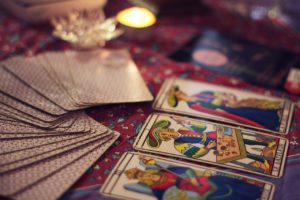 often forgotten. And I get it, it’s easy to lose your head when you suspect that magic is being thrown around – especially if you’re already a little battle-scarred before figuring out what’s going on. However, if someone is working against you and you give into that fear, you help them in their cause.
often forgotten. And I get it, it’s easy to lose your head when you suspect that magic is being thrown around – especially if you’re already a little battle-scarred before figuring out what’s going on. However, if someone is working against you and you give into that fear, you help them in their cause.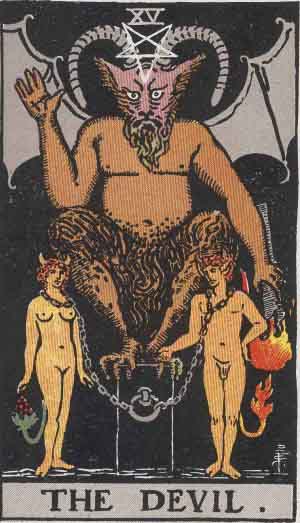

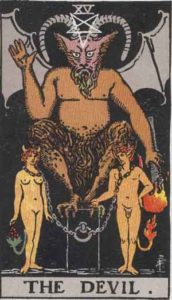 or they sort of ferment over time. In my experience of these slow wars, you usually have about 2-3 years of fermentation punctuated by relatively minor periods of being poked at before hostilities fully escalate.
or they sort of ferment over time. In my experience of these slow wars, you usually have about 2-3 years of fermentation punctuated by relatively minor periods of being poked at before hostilities fully escalate. of the heavy-lifting here, so these are the relationships you really need to cultivate.
of the heavy-lifting here, so these are the relationships you really need to cultivate. You see, sometimes witch wars involve sending asshole spirits to mess with you, and those asshole spirits tend to gravitate to the shitty, cluttered areas of your home like mosquitoes do to buckets of water. (This is pretty much why paranormal teams get people to clean up as part of the solution.)
You see, sometimes witch wars involve sending asshole spirits to mess with you, and those asshole spirits tend to gravitate to the shitty, cluttered areas of your home like mosquitoes do to buckets of water. (This is pretty much why paranormal teams get people to clean up as part of the solution.) starts the war.
starts the war. these things, gains the keys to the kingdom. There is so much more that they can do to you with this stuff- trust me on this. Because there was this one fun time and it literally nearly fucking killed me.
these things, gains the keys to the kingdom. There is so much more that they can do to you with this stuff- trust me on this. Because there was this one fun time and it literally nearly fucking killed me.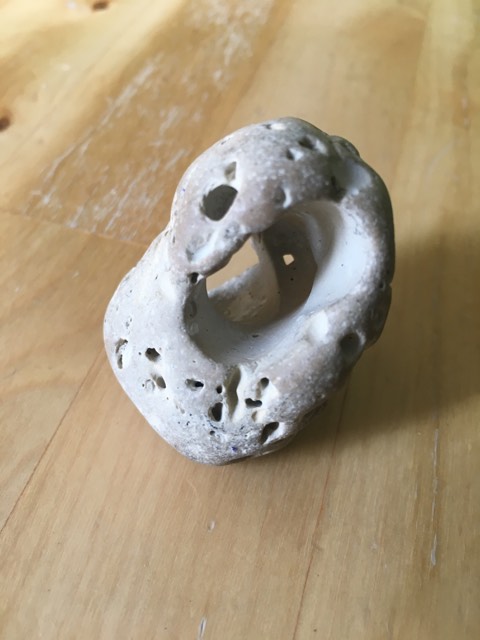

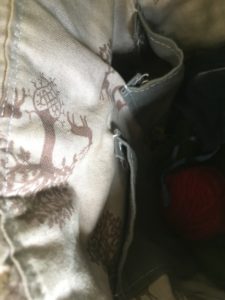
 middle of them, and although I haven’t really found good scholarship on them, my experience has been that these are both effective tools and apotropaics. They’re protective against the Unseen, and allow you – again, in my experience – to see through glamours and things that are normally unseen if you look through them.
middle of them, and although I haven’t really found good scholarship on them, my experience has been that these are both effective tools and apotropaics. They’re protective against the Unseen, and allow you – again, in my experience – to see through glamours and things that are normally unseen if you look through them.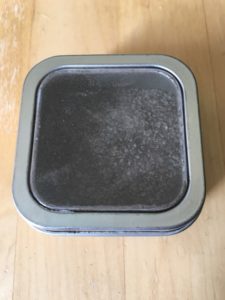 general because it has so many uses. You can use it to salt boundaries, protect, and banish. But black salt is just taking regular old salt and leveling it the fuck up! The addition of iron, ash, and (in my case) ground wolf bone, makes black salt an excellent addition to a go-bag. It’s like an apotropaic powerhouse!
general because it has so many uses. You can use it to salt boundaries, protect, and banish. But black salt is just taking regular old salt and leveling it the fuck up! The addition of iron, ash, and (in my case) ground wolf bone, makes black salt an excellent addition to a go-bag. It’s like an apotropaic powerhouse! energy that might “grow up” to get its own ideas and start its own trouble. Spun fiber can provide a bridge, delineate space, and serve as an offering in its own right. I have two spindles that I typically use in ritual work: one is a collapsible spindle that fits in my bag; and the other,
energy that might “grow up” to get its own ideas and start its own trouble. Spun fiber can provide a bridge, delineate space, and serve as an offering in its own right. I have two spindles that I typically use in ritual work: one is a collapsible spindle that fits in my bag; and the other,  my large one, was a gift to thank me for help given. I adore my large one because it feels weighty and authoritative – like a wand. It’s something I’ve wielded in ritual before now when opening portals and working my will. The collapsible one lives in my purse (yes, it’s that small) along with the sheep knuckle I use for yes/no divination.
my large one, was a gift to thank me for help given. I adore my large one because it feels weighty and authoritative – like a wand. It’s something I’ve wielded in ritual before now when opening portals and working my will. The collapsible one lives in my purse (yes, it’s that small) along with the sheep knuckle I use for yes/no divination. resonance to this item that just works. I’ve engraved it with words of power (which I won’t show here), and it’s one of my favorite spirit weapons for subduing, setting up some hardcore protective space, or for when things go bad. I don’t know whether it’s wholly iron or steel (which is mostly iron anyway), but it’s kickass anyway.
resonance to this item that just works. I’ve engraved it with words of power (which I won’t show here), and it’s one of my favorite spirit weapons for subduing, setting up some hardcore protective space, or for when things go bad. I don’t know whether it’s wholly iron or steel (which is mostly iron anyway), but it’s kickass anyway. This is one of my more McGyver-type items. Red thread can be used to bind and protect, or create new items (like a crossroads effigy or protective rowan cross). It can also be used for knot spells, marking off space, and much more. The yarn I use is hand spun with intent and then ritually consecrated.
This is one of my more McGyver-type items. Red thread can be used to bind and protect, or create new items (like a crossroads effigy or protective rowan cross). It can also be used for knot spells, marking off space, and much more. The yarn I use is hand spun with intent and then ritually consecrated.





 When you have a specific working in mind, take the time to research the cost of supplies. Shop around, fill shopping baskets on random sites and see what totals you get. Sometimes things will work out much cheaper than you initially expected and are actually affordable with a bit of budgeting work. Conversely, things may turn out to be a whole lot more expensive than you thought, so it’s good to cost things out to avoid any nasty surprises.
When you have a specific working in mind, take the time to research the cost of supplies. Shop around, fill shopping baskets on random sites and see what totals you get. Sometimes things will work out much cheaper than you initially expected and are actually affordable with a bit of budgeting work. Conversely, things may turn out to be a whole lot more expensive than you thought, so it’s good to cost things out to avoid any nasty surprises.
 rundown of what meditation actually is.
rundown of what meditation actually is.
 unseen interacting with you in some of these places, and that’s fantastic. That’s what you want as a witch! Relationships with the Unseen have always been part and parcel of witchery. Just remember to be polite and to never offer anything of yourself or that you are not prepared to truly give.
unseen interacting with you in some of these places, and that’s fantastic. That’s what you want as a witch! Relationships with the Unseen have always been part and parcel of witchery. Just remember to be polite and to never offer anything of yourself or that you are not prepared to truly give.
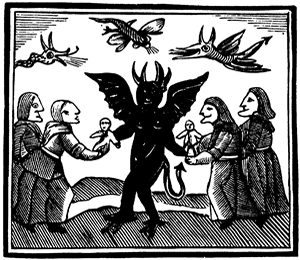
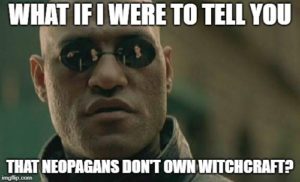 like I have to say this, but witchcraft isn’t just the domain of (predominantly) white neo-Pagans – there are forms of witchcraft all over the globe, existing in multiple worldviews. Just because you’ve created modern forms of religious witchcraft, it doesn’t mean that you somehow have a claim on it all, or that it bears any resemblance to (any) historical witchcraft. In other words, none of us get to be
like I have to say this, but witchcraft isn’t just the domain of (predominantly) white neo-Pagans – there are forms of witchcraft all over the globe, existing in multiple worldviews. Just because you’ve created modern forms of religious witchcraft, it doesn’t mean that you somehow have a claim on it all, or that it bears any resemblance to (any) historical witchcraft. In other words, none of us get to be 

 generally think. We *could* do a lot more, but most of us just aren’t there yet (you know, if we’re being real). We’ve got a lot to build and paradigms to shift before we can really get there.
generally think. We *could* do a lot more, but most of us just aren’t there yet (you know, if we’re being real). We’ve got a lot to build and paradigms to shift before we can really get there. have in times like these is disbelief. We don’t want people to believe we can do the things they associate with witchcraft. Especially not in times like these. Trust me, we probably wouldn’t like their BBQs, and it wouldn’t just be because the potato salad has raisins in it.
have in times like these is disbelief. We don’t want people to believe we can do the things they associate with witchcraft. Especially not in times like these. Trust me, we probably wouldn’t like their BBQs, and it wouldn’t just be because the potato salad has raisins in it.